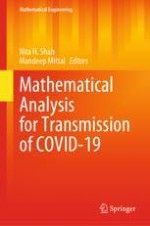2021 | OriginalPaper | Chapter
9. Fractional SEIR Model for Modelling the Spread of COVID-19 in Namibia
Authors : Samuel M. Nuugulu, Albert Shikongo, David Elago, Andreas T. Salom, Kolade M. Owolabi
Published in: Mathematical Analysis for Transmission of COVID-19
Publisher: Springer Singapore
Activate our intelligent search to find suitable subject content or patents.
Select sections of text to find matching patents with Artificial Intelligence. powered by
Select sections of text to find additional relevant content using AI-assisted search. powered by
